
Question and Answers Forum
Question Number 23937 by ajfour last updated on 10/Nov/17
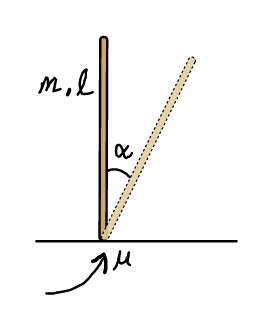
Commented by ajfour last updated on 10/Nov/17
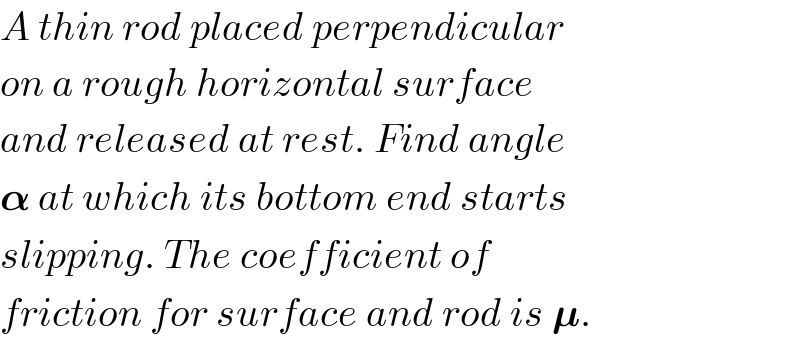
Answered by Physics lover last updated on 10/Nov/17
![assuming that the rod has turned by an angle θ and further θ + dθ α = ((mg Sin θ (l/2))/((ml^2 )/3)) ⇒ α = ((3g Sin θ)/(2l)) ...i ⇒ ω^(2 ) = ((3g (1−Cos θ))/l) .... ii mg − N = (mω^2 (l/2) Cos θ ) + ((3mgSin^2 θ)/4) ⇒ N = {mg − mω^(2 ) (l/2) Cos θ − ((3mg Sin^2 θ )/4) } ⇒ N = mg{ 1− (((3(1−Cos θ))/2))Cos θ −((3Sin^2 θ)/4)} ⇒ N = ((mg)/4) [4 − 6 Cos θ + 6 Cos^(2 ) θ −3 + 3 Cos^(2 ) θ ] ⇒ N = ((mg)/4)[ 1− 3 Cos θ ]^2 we can have two cases 1. when mg Cos θ > mω^2 (l/2) 2. mω^(2 ) (l/2) > mg Cos θ in first case μN Sin θ will be in opposite direction of mg Cos θ. ⇒mg Cos θ ± μ N Sine θ = mω^2 (l/2) ⇒mg Cos θ ± μ ((mg(1 − 3 Cos θ)^2 )/4)Sin θ = ((3mg(1− Cos θ))/2) ⇒4 Cos θ ± μ∙Sin θ ∙ (1− 3 Cos θ)^2 =6− 6 Cos θ ⇒10 Cos θ ± μ Sin θ(1− 3 Cos θ)^2 = 6 α = θ : it satisfies the above equation](Q23941.png)
Commented by ajfour last updated on 10/Nov/17
![mg−N = mω^2 (l/2)cos θ+((mαl)/2)sin θ ⇒ mg−N=((3mgcos θ(1−cos θ))/2) + ((3mg)/4)sin^2 θ ⇒ N=mg[1−(3/2)cos θ(1−cos θ) −(3/4)sin^2 θ ] N = ((mg)/4)[4−6cos θ+6cos^2 θ−3sin^2 θ] =((mg)/4)(1−6cos θ+9cos^2 θ) N=((mg)/4)(3cos 𝛉−1)^2 ⇒ N is zero for θ=cos^(−1) ((1/3)) . If f ≥ 𝛍N for θ < cos^(−1) ((1/3)) then slipping occurs at a lesser angle. f =m(((𝛂l)/2)cos 𝛉−((𝛚^2 l)/2)sin 𝛉) =((3mg)/4)sin θcos θ−((3mg)/2)sin θ(1−cos θ) =((3mg)/4)sin θ[cos θ−2+2cos θ] =((3mg)/4)sin θ(3cos θ−2) f > 𝛍N ⇒ ((3mg)/4)sin θ(3cos θ−2) > ((μmg)/4)(3cos θ−1)^2 or 𝛍 < ((3sin θ(3cos θ−2))/((3cos θ−1)^2 )) So if slipping doesn′t take place till θ ≤ cos^(−1) ((1/3)) , contact itself breaks at θ=cos^(−1) ((1/3)) ; and for slipping to occur at a lesser angle, 𝛉 should be such that ((sin θ(cos θ−(2/3)))/((cos θ−(1/3))^2 )) > μ .](Q23942.png)
Commented by Physics lover last updated on 10/Nov/17

Commented by Physics lover last updated on 10/Nov/17

Commented by ajfour last updated on 10/Nov/17

Commented by Physics lover last updated on 10/Nov/17

Commented by Physics lover last updated on 10/Nov/17

Commented by Physics lover last updated on 10/Nov/17

Commented by mrW1 last updated on 10/Nov/17
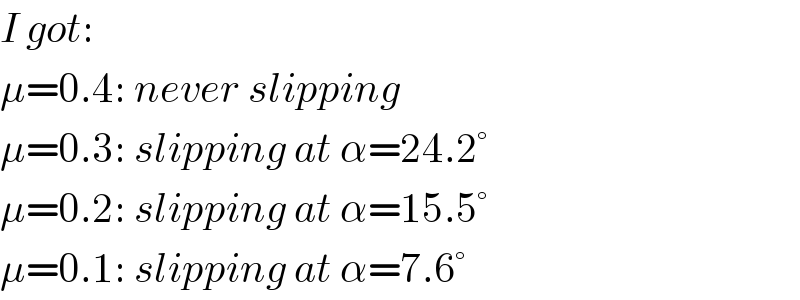
Commented by Physics lover last updated on 10/Nov/17

Commented by ajfour last updated on 10/Nov/17
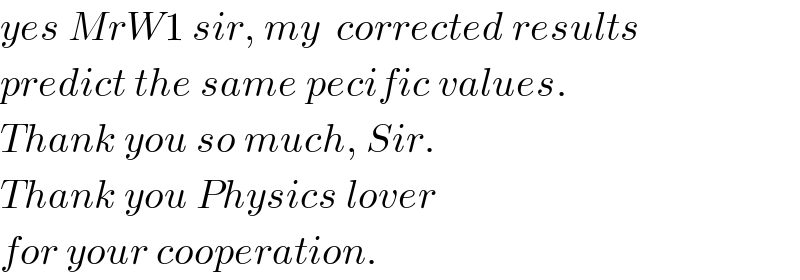
Commented by Physics lover last updated on 10/Nov/17

Commented by Physics lover last updated on 10/Nov/17

Commented by mrW1 last updated on 10/Nov/17
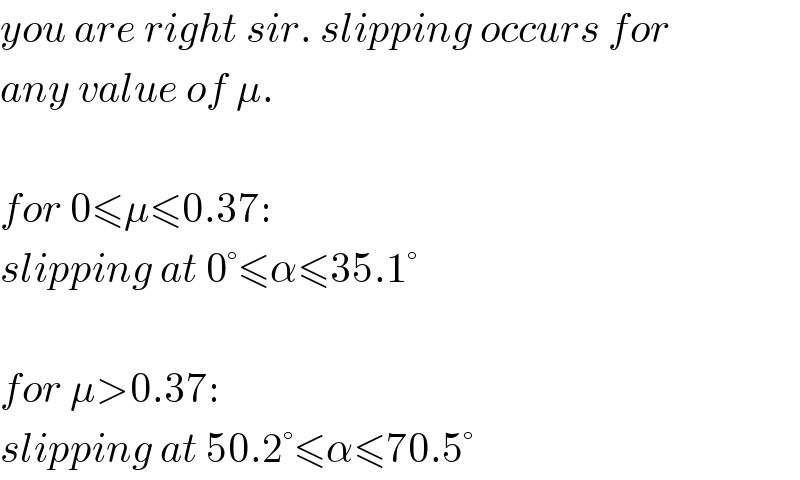
Commented by mrW1 last updated on 10/Nov/17
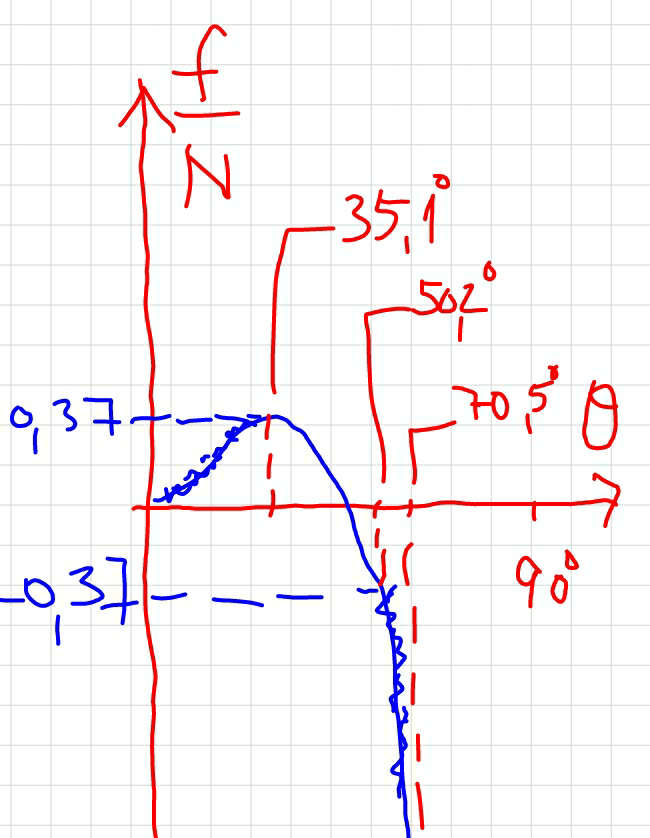
Commented by Physics lover last updated on 10/Nov/17
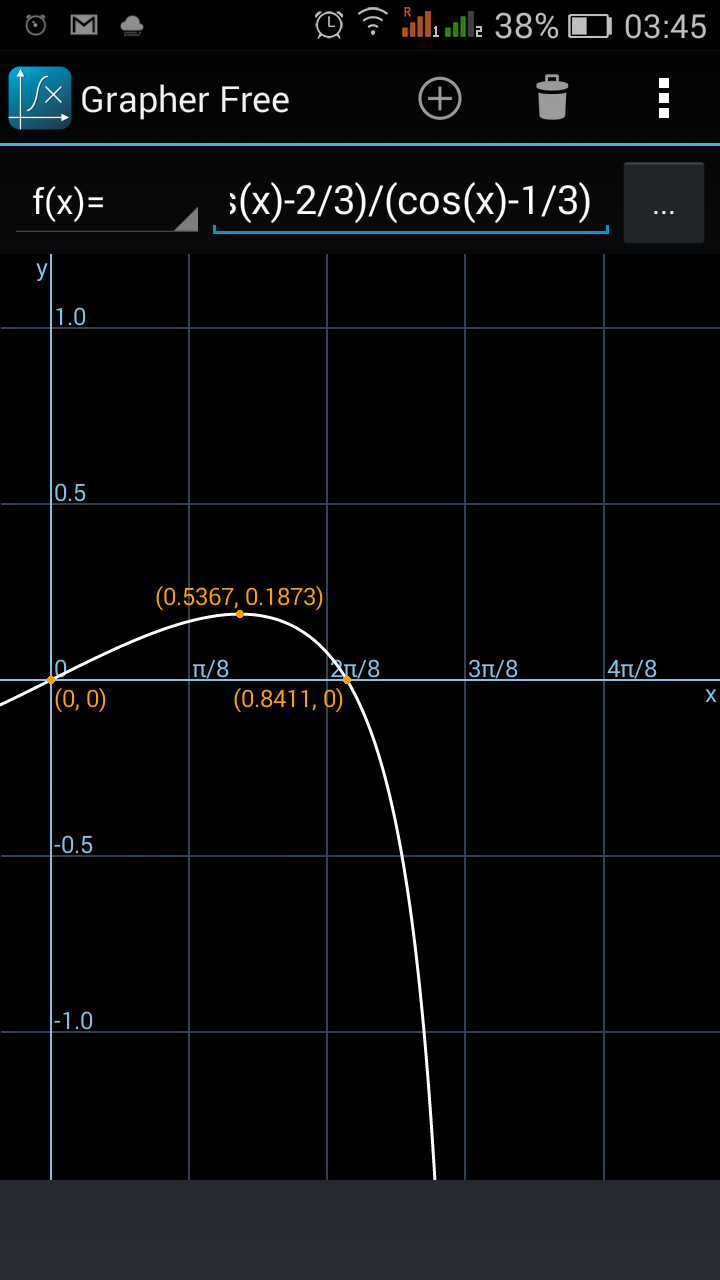
Commented by Physics lover last updated on 10/Nov/17

Commented by Physics lover last updated on 10/Nov/17

Commented by mrW1 last updated on 11/Nov/17
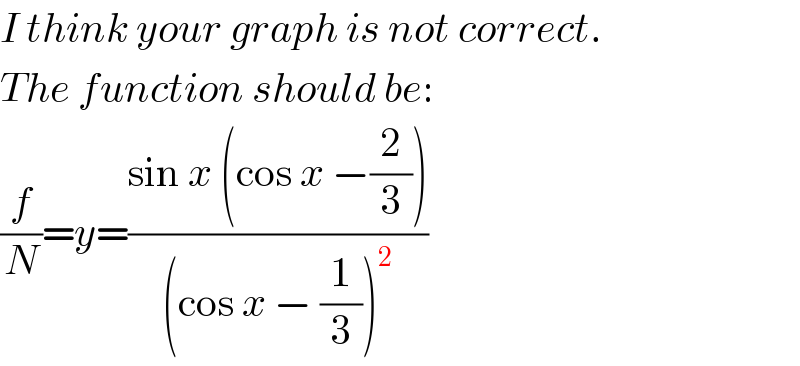
Commented by mrW1 last updated on 10/Nov/17
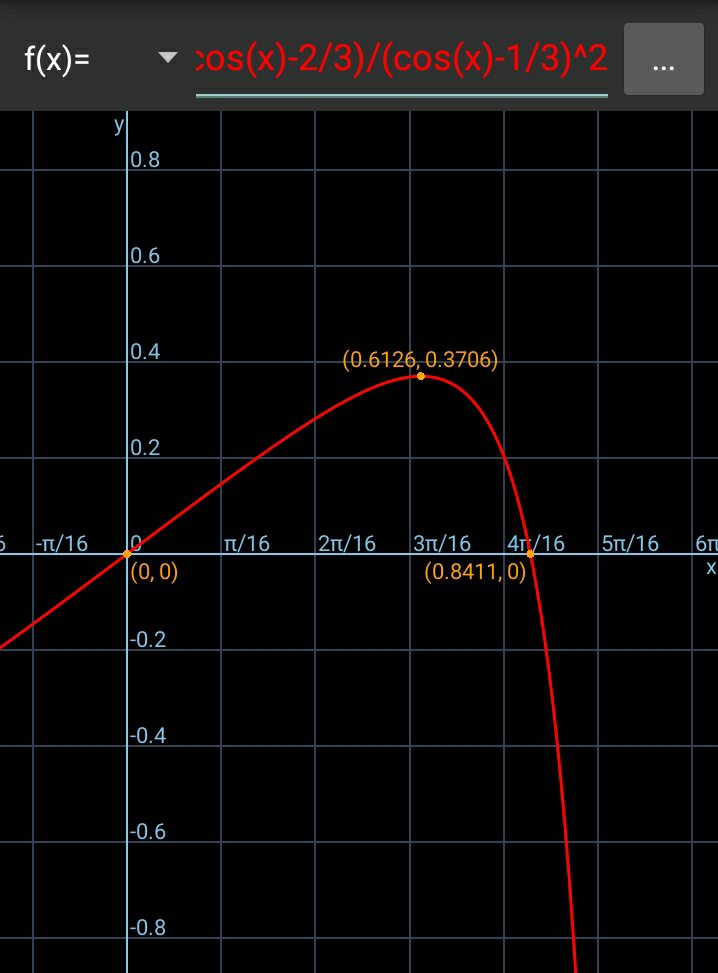
Commented by mrW1 last updated on 11/Nov/17

Commented by mrW1 last updated on 11/Nov/17
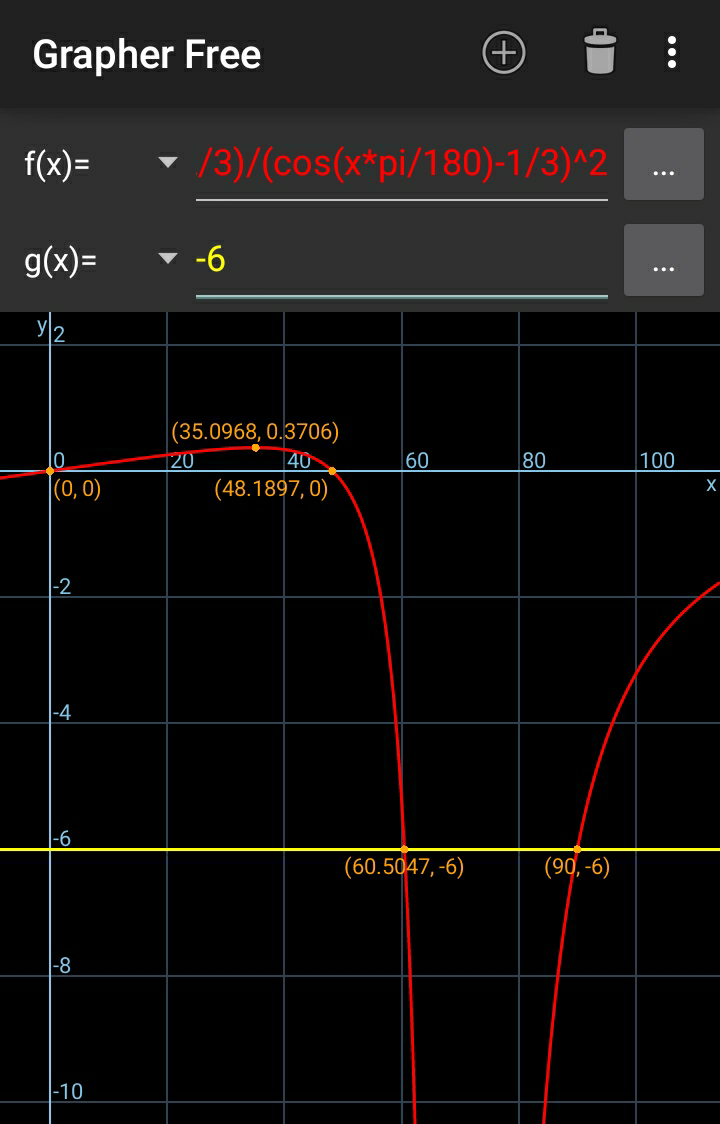
Commented by mrW1 last updated on 11/Nov/17
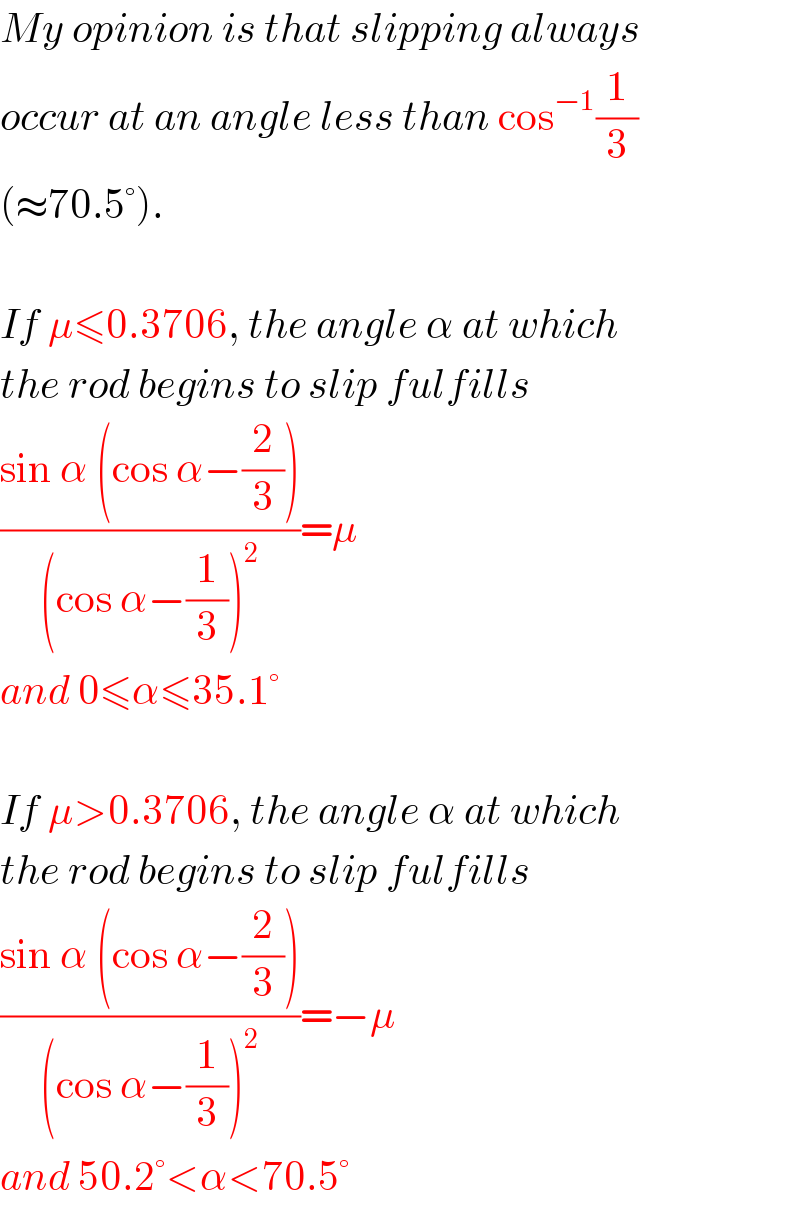
Commented by mrW1 last updated on 11/Nov/17
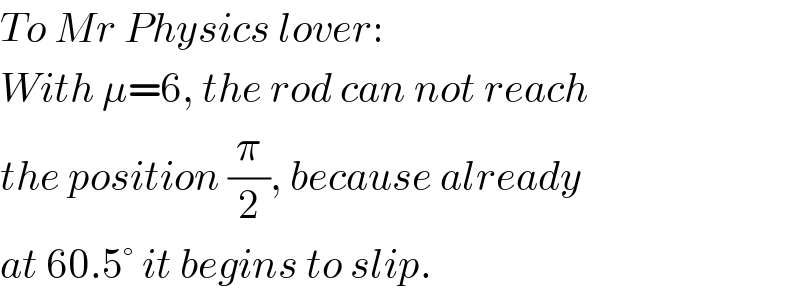
Commented by ajfour last updated on 11/Nov/17
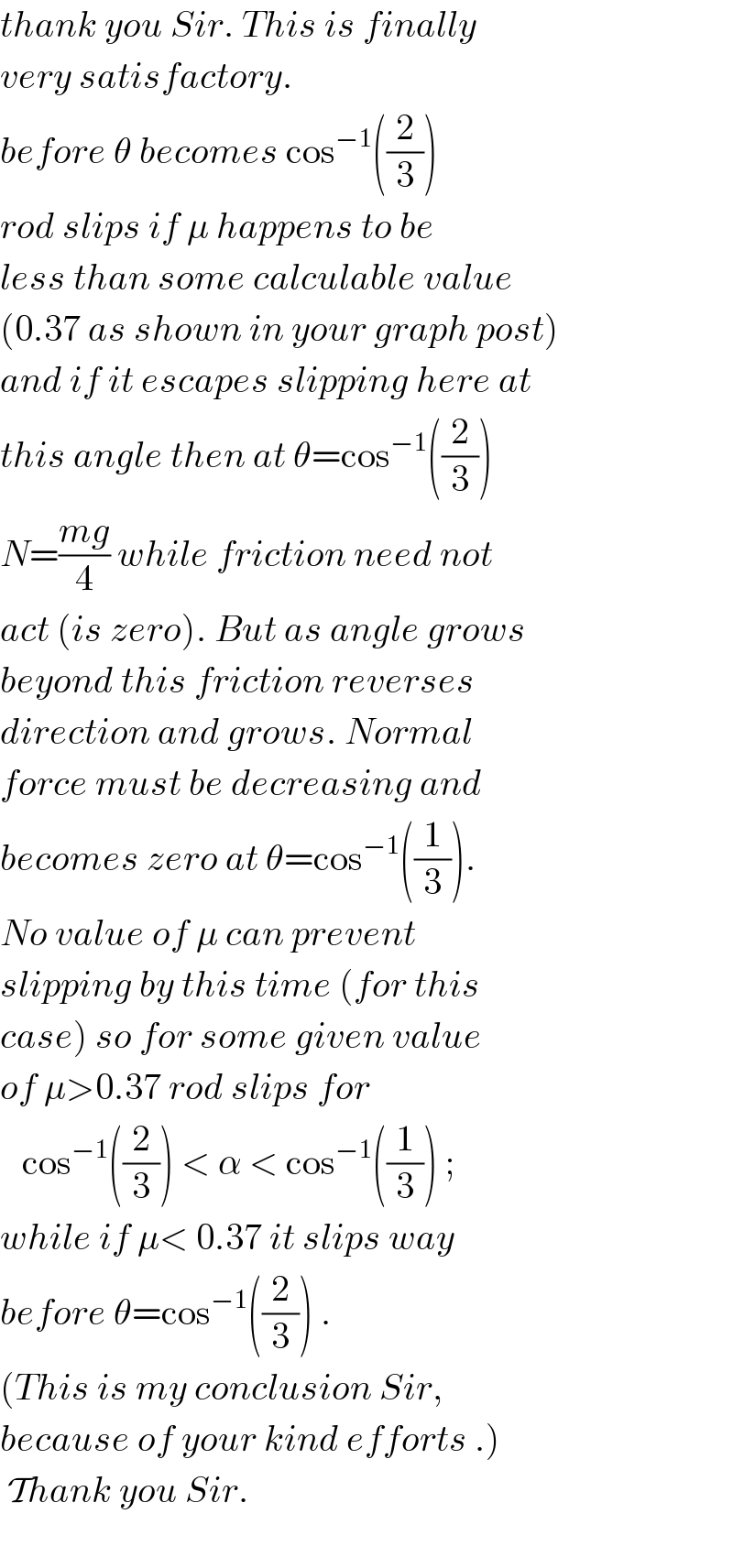
Commented by Physics lover last updated on 11/Nov/17

